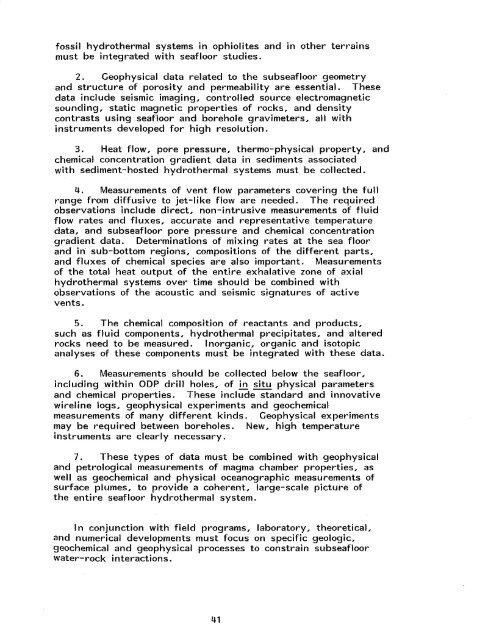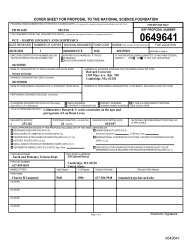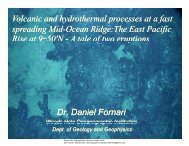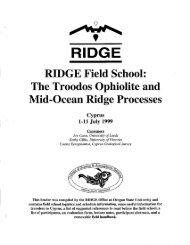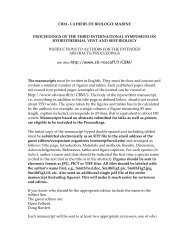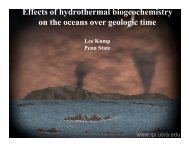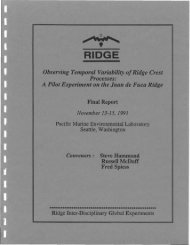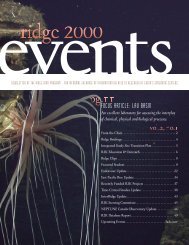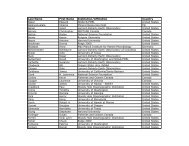Create successful ePaper yourself
Turn your PDF publications into a flip-book with our unique Google optimized e-Paper software.
fossil hydrothermal systems in ophiolites and in other terrains<br />
must be integrated with seafloor studies.<br />
2. Geophysical data related to the subseafloor geometry<br />
and structure of porosity and permeability are essential. These<br />
data include seismic imaging, controlled source electromagnetic<br />
sounding, static magnetic properties of rocks. and density<br />
contrasts using seafloor and borehole gravimeters, all with<br />
instruments developed for high resolution.<br />
3. Heat flow, pore pressure, thermo-physical property. and<br />
chemical concentration gradient data in sediments associated<br />
with sediment-hosted hydrothermal systems must be collected.<br />
4. Measurements of vent flow parameters covering the full<br />
range from diffusive to jet-like flow are needed. The required<br />
observations include direct. non-intrusive measurements of fluid<br />
flow rates and fluxes, accurate and representative temperature<br />
data, and subseafloor pore lJressure and chemical concentration<br />
gradient data. Determinations of mixing rates at the sea floor<br />
and in sub-bottom regions, compositions of the different parts.<br />
and fluxes of chemical species are also important. Measurements<br />
of the total heat output of the entire exhalative zone of axial<br />
hydrothermal systems over time should be combined with<br />
observations of the acoustic and seismic signatures of active<br />
vents.<br />
5. The chemical composition of reactants and products.<br />
such as fluid components. hydrothermal precipitates, and altered<br />
rocks need to be measured. Inorganic. organic and isotopic<br />
analyses of these components must be integrated with these data.<br />
6. Measurements should be collected below the seafloor,<br />
including within ODP drill holes, of in situ physical parameters<br />
and chemical properties. These include standard and innovative<br />
wireline logs, geophysical experiments and geochemical<br />
measurements of many different kinds. Geophysical experiments<br />
may be required between boreholes. New, high temperature<br />
instruments are clearly necessary.<br />
7. These types of data must be combined with geophysical<br />
and petrological measurements of magma chamber properties, as<br />
well as geochemical and physical oceanographic measurements of<br />
surface plumes, to provide a coherent. large-scale picture of<br />
the entire seafloor hydrothermal system.<br />
In conjunction with field programs, laboratory. theoretical.<br />
and numerical developments must focus on specific geologic,<br />
geochemical and geophysical processes to constrain subseafloor<br />
water-rock interactions.<br />
41


